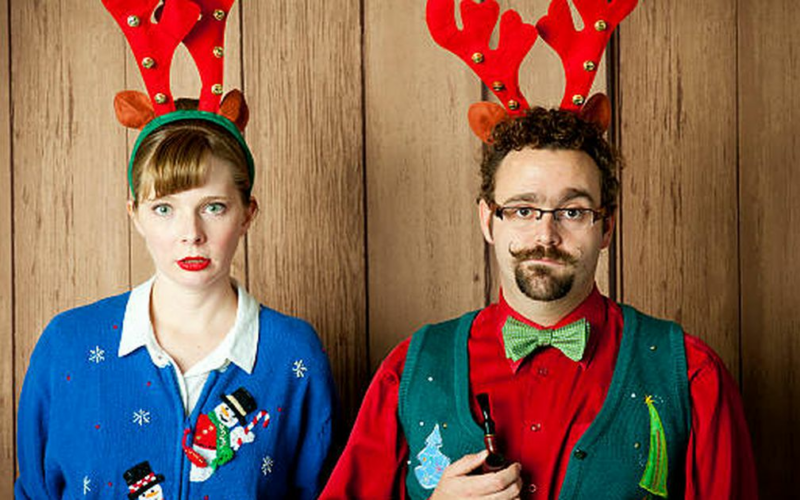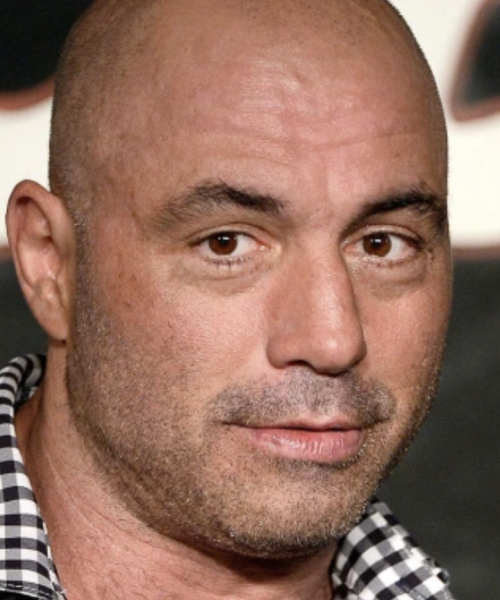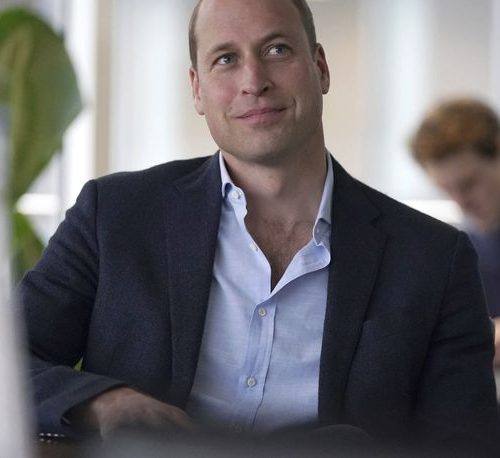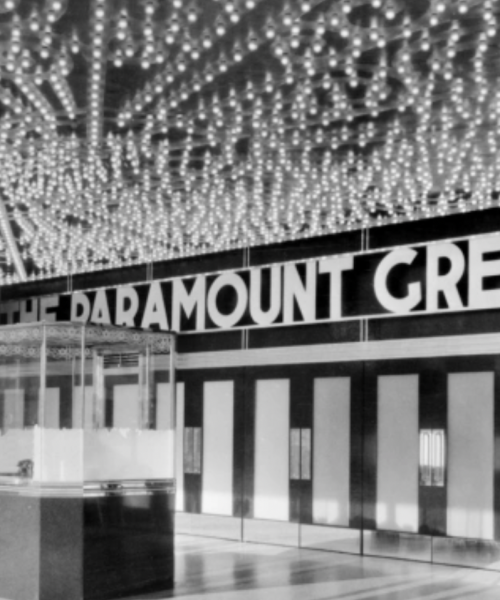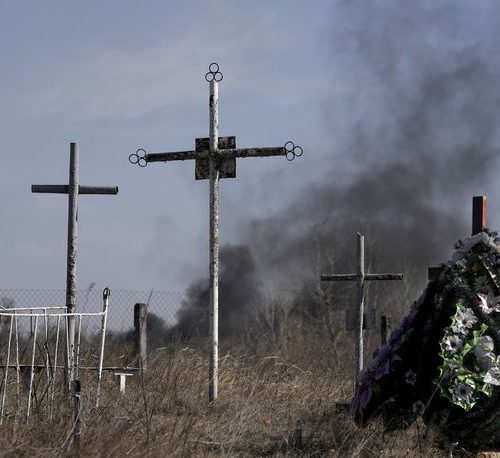By Susan Tompor, Detroit Free Press
Troy Warren for CNT #Business
‘There’ll definitely be a shortage,’ one business owner said
Go back just a year ago and it wouldn’t have mattered that three 40-foot corrugated metal shipping containers stuffed with thousands of ugly holiday sweaters couldn’t make their way out of a California port.
Who was going out to the bars? Or heading to a big family dinner? Who worried about buying a new quirky sweater when life looked grim as COVID-19 cases soared?
Fred Hajjar, president of Michigan-based UglyChristmasSweater.com, sold a lot of holiday lounge pants and pajamas last year as people stayed home.
Now he sees the ugly sweaters making a beautiful comeback, as more people feel festive, plan to see family and continue to shop from home. He estimates the online retailer will sell 100,000 or more in holiday sweaters.
“I’m fairly confident, it’s going to be a big year,” Hajjar said. “Christmas sweaters, there’ll definitely be a shortage.”
Demand is driving optimism this year but kinks in the supply chain, including bottlenecks along various points in the transportation system, could cut into supply. We’re hearing talk about potential shortages of toys, trees and, yes, maybe even holiday sweaters.
Where are Jay and Silent Bob?
The ugly sweater story is a local snapshot of shortages, higher prices and headaches or opportunities, depending on your point of view. Many ugly vintage Christmas sweaters, after all, started out in the late 1980s and as another person’s merry fashion statement.
Hajjar is facing skyrocketing transportation costs, extraordinary delays and worrying about those three containers of sweaters and pajamas.
“Ours are stuck, I believe, in Long Beach,” Hajjar said.
The containers are packed with a popular holiday sweater featuring the movie characters Jay and Silent Bob and a special line of holiday pajamas where families can have their names printed on the PJs. A family of three can spend $120 or more on matching holiday-themed sleepwear.
Roughly, 30,000 pieces of fun holiday gear — each container can hold 10,000 items — should be in Commerce Township, Michigan, ready go, but in mid-October they were caught up in one giant supply chain mess.
What it takes to get back to normal
This holiday, many people want to get back to normal — or at least within 6 feet of normal.
And for many, no holiday is complete without showing up somewhere in a garish green-and-red sweater with Dwight K. Schrute from “The Office” on the front or donning a sparkly, candy cane-covered black blazer.
Many are giving up on sitting on the couch trying to Zoom for the holidays. People have money to spend, thanks to the federal stimulus rollouts and the uptick in the economy.
“If you follow college football at all, there’s like 100,000 people in the stadiums,” said Hajjar, who got his start in the novelty clothing business selling T-shirts out of his Hubbard Hall dorm room at Michigan State University. Make no mistake, his 42,000-square-foot warehouse in Commerce Townsis stacked with boxes and boxes and boxes of clever sweaters ready for the season.
What’s going to be tougher to buy this holiday — or much higher priced — may be debatable. Retailers, of course, have an incentive to get customers to buy early — and often — as the fear of missing out builds into a frenzy.
Clogs clearly exist in the supply chain system as a backlog of cargo ships creates a traffic jam in the Pacific Ocean. And logistics experts warn that the trucking system is short on drivers.
Baby Yoda, Kiss and 91 other designs
Yet as I walked with Hajjar, 41, and his brother Mark Hajjar, 38, through the warehouse, I had to wonder: What holiday shortage? They have 93 varieties of holiday sweaters this year.
They pulled a black, gray, white and red “Merry KISSmas” sweater out of the packaging and showed me how the Gene Simmons-licensed red tongue flaps up and down with a special gadget in the sleeve. Price: $52.95 to $59.99 for bigger sizes.
And they highlighted the new black-and-white-and-green, 3D Baby Yoda sweater — which Whoopi Goldberg was photographed wearing on “The View” late last December. Baby Yoda’s left hand, which is holding some Christmas trees, moves when you squeeze him. Price: $49.95.
The Baby Yoda sweater was sent to influencers last year, including a major Star Wars blog, even though it wasn’t really available to be sold in time for Christmas 2020. The Star Wars blog, Hajjar said, then sent the sweater to Goldberg, a big Baby Yoda fan, and she actually wore it on the show.
“We didn’t even expect it,” Hajjar said.Christmas-themed apparel isn’t all that’s at risk because of supply chain issues this holiday.
The Hajjar brothers, who grew up in West Bloomfield, sell lawn decorations — some in the PG-13 category like the reindeer playing adult games — online, too.
One shipping container full of inflatable holiday lawn decorations is sitting in the Port of Vancouver, British Columbia, unable to get unloaded as a result of supply chain woes that were made worse because of the pandemic. Prices on those lawn decorations blew up an average 26% this year. Price increases range from 18% to 42% on some items.
Hajjar’s company’s cost of shipping has gone up from $3,900 a container in 2019, he said, to $28,000 a container in September. That’s nearly more than double the $15,000 cost in April. Smaller operations are facing greater pressure from higher shipping costs.
Hajjar estimates that the price of sweaters will go up around 10%, as the company will pass on part of its extra cost to customers.
Will there be a Christmas tree shortage?
The American Christmas Tree Association predicted that both live and artificial trees will be hit by holiday shortages and price hikes. Prices of artificial trees, for example, could go up 20% to 30% this season.
The group blamed the price increases on “extreme weather events in the Pacific Northwest and Midwest, supply chain congestion in and out of ports, and shipping container shortages.”
Wayne Bronner, CEO of Bronner’s CHRISTmas Wonderland in Frankenmuth, said his store is well-stocked with high-quality Christmas trees, priced at $300 and up, and Bronner’s has not raised prices on the trees. But he is experiencing some issues relating to the supply chain disruptions.
“We’re receiving things about two months later than we anticipated,” Bronner said.


























